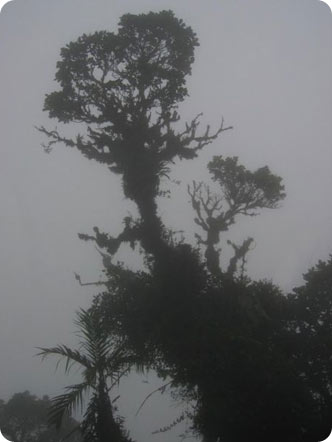A cold, slow current along the Pacific coast of South America nurtures one of the most productive fisheries in the world. Anchovies, sardines, mackerel, squid, and a host of other creatures thrive in its nutrient-rich waters.

But the Humboldt Current also nurtures life in the foothills of the Andes Mountains. Dense fog supplies water to dense patches of rainforest. It may also supply nutrients -- the same nutrients that support the food chain in the ocean.
Some of these forests are in Fray Jorge National Park in Chile. They’re several miles inland, and about 1,500 to 2,000 feet high. They’re in the middle of some of the driest terrain on the planet -- areas that receive only about four to six inches of rainfall a year.
The forests cover no more than a few dozen acres, but they’re dense and lush. Their water comes from fog, so they’re described as fog forests.
The fog forms as warm air blows inland across the cold waters of the Humboldt Current. Trees have adapted to catch the fog. As it condenses on their leaves, some of it drops to the ground, watering other plants, which in turn help sustain insects, birds, and other life.
Over the last few years, research has shown that the fog also appears to supply nitrogen, phosphorous, and other basic nutrients. Wind and waves may churn up the ocean surface, hurling the nutrients into the air. The wind then carries them ashore, where they can feed the fog forests of Chile.

